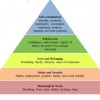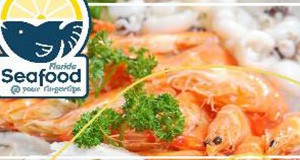Over the past few years, consumers have begun to pay more attention to the nutritional benefits, sustainability, and environment impact of consuming seafood. However, media coverage of these concerns may leave consumers confused and uncertain about how they should incorporate seafood into their diets. In 2013, a survey was conducted to better understand Florida seafood consumer preferences, perceptions, and concerns. This 4-page fact sheet explains the survey’s findings and how they might help Extension deliver effective seafood-based education to Florida residents. Written by Lisa Krimsky, Charles Adams, and Bryan Fluech, and published by the UF Department of Food and Resource Economics, May 2015. http://edis.ifas.ufl.edu/fe965
Tag: Education Programs
Maslow's Hierarchy of Needs and Its Relation to Learning and Achievement
 Learners in courses or training can be preoccupied. They worry about other courses, their home life, friends, extracurricular activities, physiological needs like food and sleep, and the list goes on. When learners are preoccupied with these concerns, learning and achievement are regularly put on the back burner. So how do we get our learners to focus on learning? Instructors can help learners satisfy needs, so the focus can be on content, learning, and achievement. This 3-page fact sheet was written by Sarah E. Burleson and Andrew C. Thoron, and published by the UF Department of Agricultural Education and Communication, April 2014.
Learners in courses or training can be preoccupied. They worry about other courses, their home life, friends, extracurricular activities, physiological needs like food and sleep, and the list goes on. When learners are preoccupied with these concerns, learning and achievement are regularly put on the back burner. So how do we get our learners to focus on learning? Instructors can help learners satisfy needs, so the focus can be on content, learning, and achievement. This 3-page fact sheet was written by Sarah E. Burleson and Andrew C. Thoron, and published by the UF Department of Agricultural Education and Communication, April 2014.
http://edis.ifas.ufl.edu/wc159
AEC395/WC076 Implementing Inquiry-Based Teaching Methods
AEC395, a 5-page illustrated fact sheet by Anna J. Warner and Brian E. Myers, focuses on the nature of inquiry and provides basic guidelines and strategies for implementing inquiry-based teaching methods. Includes references. Published by the UF Department of Agricultural Education and Communication, September 2008.
http://edis.ifas.ufl.edu/WC076
AEC394/WC075 What is Inquiry Based Instruction?
AEC394, a 3-page illustrated fact sheet by Anna J. Warner and Brian E. Myers, introduces agricultural educators to inquiry-based education, providing definitions, examples, and reasons to adopt this teaching method. Includes references. Published by the UF Department of Agricultural Education and Communication, September 2008.
http://edis.ifas.ufl.edu/WC075
AEC-393/WC074 Creating Interest in Learners
AEC-393, a 3-page illustrated fact sheet by Matt Benge and Amy Harder, describes the “Interest Approach” to classroom instruction, methods for creating interest, and natural impulses that may be appealed to in teaching to help create interest. Includes references. Published by the UF Department of Agricultural Education and Communication, September 2008.
http://edis.ifas.ufl.edu/WC074
AEC 390/WC071 Visual Teaching Tools: Concept Maps
AEC-390, a 4-page illustrated fact sheet by Lauren Dillard and Brian E. Myers, describes these educational tools, what they are, types of concept maps, and their purpose. Published by the UF Department of Agricultural Education and Communication, May 2008.
http://edis.ifas.ufl.edu/WC071
AEC388/WC069 Creating and Working with Rubrics
AEC-388, a 5-page illustrated fact sheet by Aubrey L. Stoughton and Brian E. Myers, describes types of rubrics and how to create them for teachers to evaluate student performance. Published by the UF Department of Agricultural Education and Communication, May 2008.
http://edis.ifas.ufl.edu/WC069
